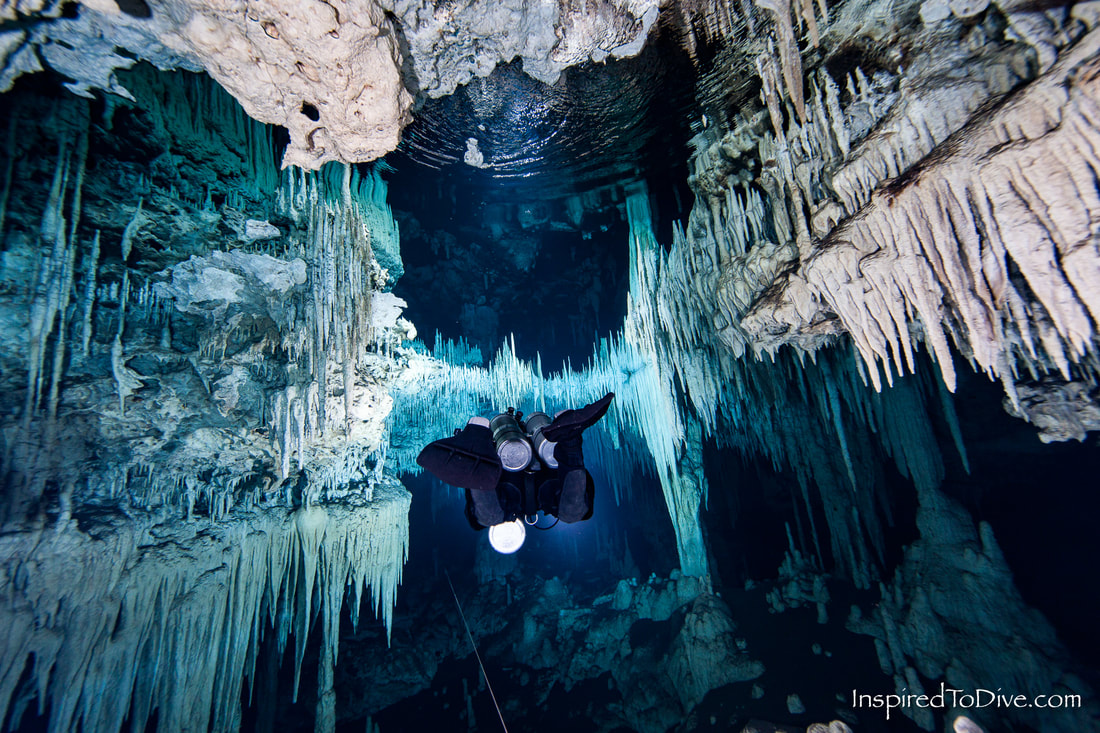Plastic is ending up in our oceans and our marine life. It’s finding its way into the food chain and the fish we like to eat. Much to my horror, I have discovered that plastic is finding its way into caves too.
I recently spent a couple of months cave diving in Mexico. The Yucatan Peninsula is a mecca for cave divers. Hundreds of kilometres of underwater caves connect hundreds of cenotes. The underground aquifer is amazing and I feel fortunate to have had this amazing experience.
The water in the caves is often crystal clear. People comment on my underwater photos “is there even water in there?” Swimming through the cave, you can imagine you’re swimming in a pristine environment. It may be an illusion though. Human activity on the land above the cave systems means that the water isn’t drinkable without treatment. Ear infections are common.
This time I decided to go downstream. The downstream cave has a different feel. The silty floor is darker from organic material washing into the cave. The cave is punctuated with air domes. White columns clash with the dark floor. It’s beautiful. It’s also contaminated with plastic.
Passing by an air dome, a flash of vibrant pink grabbed my attention. Playing my light across the water’s surface, I could see brightly coloured objects floating. They were caught up with crystalline calcite rafting and buoyant seed pods (both natural features). At first glance there were plastic bottle caps and those bottle security ties that you rip off a sealed water bottle before you guzzle it. There were brightly coloured objects I couldn’t immediately identify, except to say that it all looked like plastic.
I kept diving but I couldn’t get my mind off the rubbish. I wasn’t about to leave it in the cave. On the way out I signalled my team mate Cameron, who is also my spouse. I asked him to join me and help me grab what floating plastic we could from the air dome. He wasn’t particularly happy about it, which I could understand. What cave diver wants their last memory of a great trip to be of collecting garbage?
It was a miserable job. Not the collecting of the plastic. Simply seeing all this waste from human activity messing up a natural environment.
I wondered… where is all the plastic coming from? Cenote Nohoch Nah Chich is a popular tourist site. Snorkellers make up most of the traffic. The cenote has a generous cavern zone where you can snorkel into the overhang. Perhaps those swimmers have plastic items in their pockets: chapsticks, hand sanitiser, pens and chocolate wrappers.
I also collected twenty brightly-coloured plastic loops in the shape of springs. They looked like some kind of bangle. This fashion trend completely passed me by and they surely don’t belong in the cave.
We can all pick up litter even if it’s not our own. This is especially important around water such as the sea or freshwater sites like cenotes and streams. When it rains garbage is transported downhill to the water. It’s easier to keep water clean than clean it up.
We can also spread awareness. There’s a global movement challenging our current thinking around how we use plastic in our lives. Plastic Free July is about motivating people to refuse single-use plastic items and find a way to live without them. There are really easy places to start, such as bringing your own reusable bags to the supermarket for your groceries.
Finding plastic inside an underwater cave was disturbing. We need to take more care of our water. Next time you go for a swim, check your pockets for unsecured items. Please be careful how you dispose of plastic around Mexico’s stunning cenotes. We want them to stay that way. #choosetorefuse






 RSS Feed
RSS Feed

